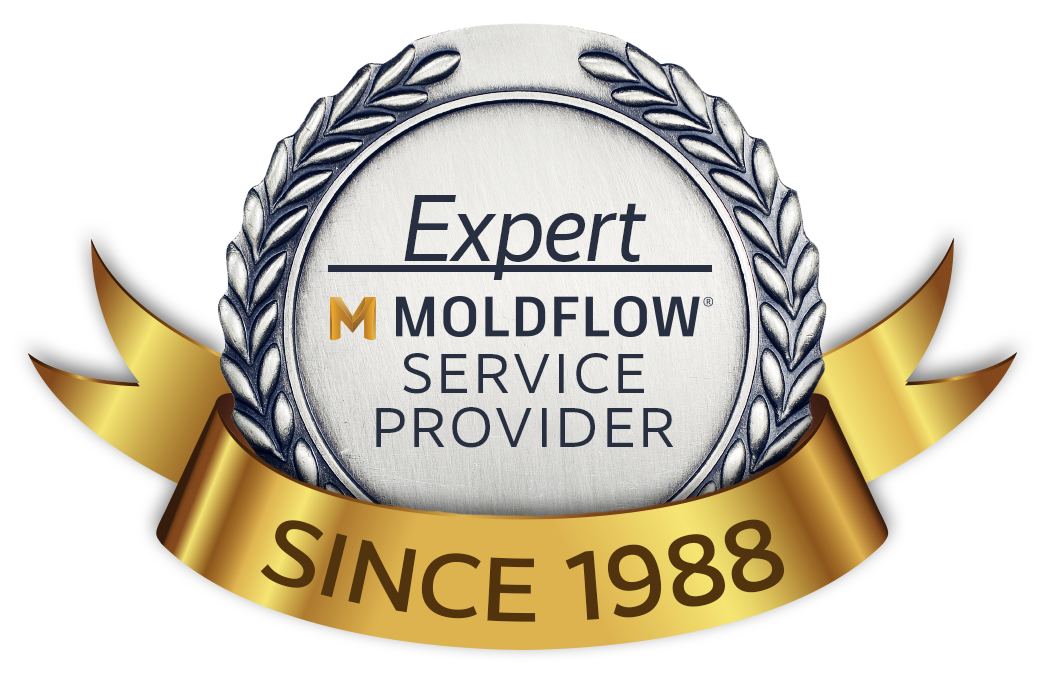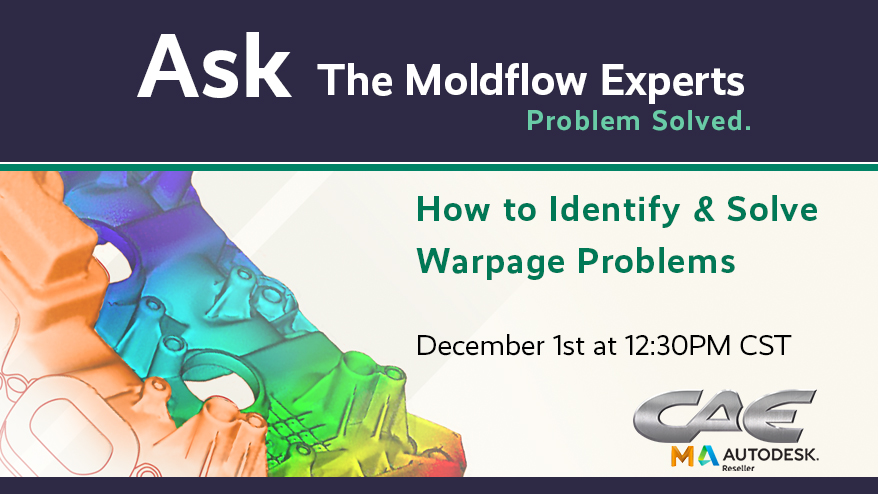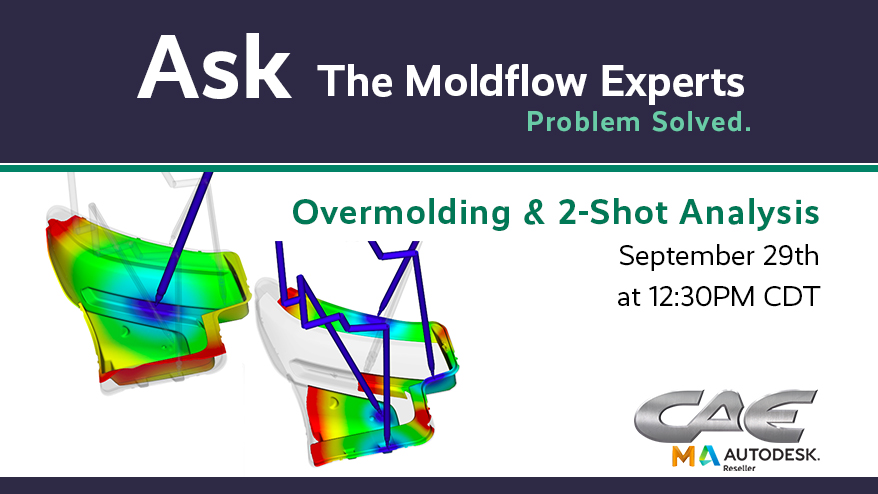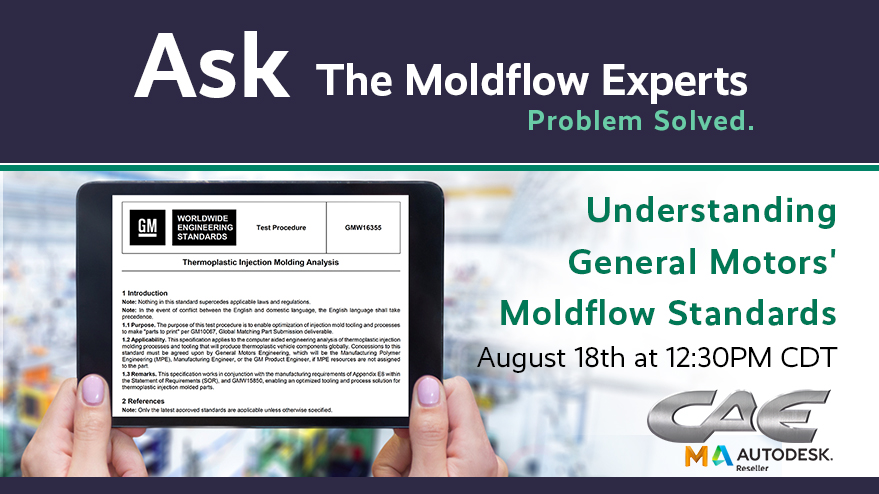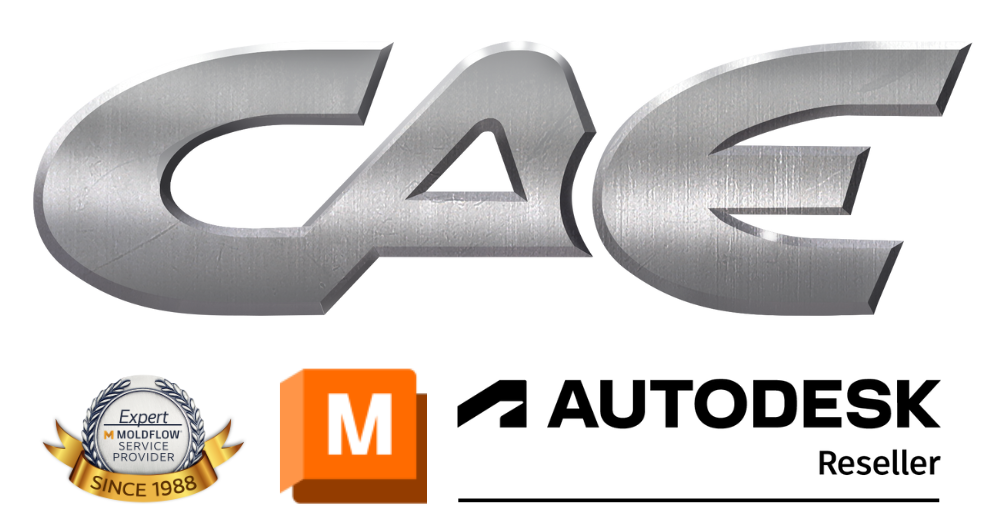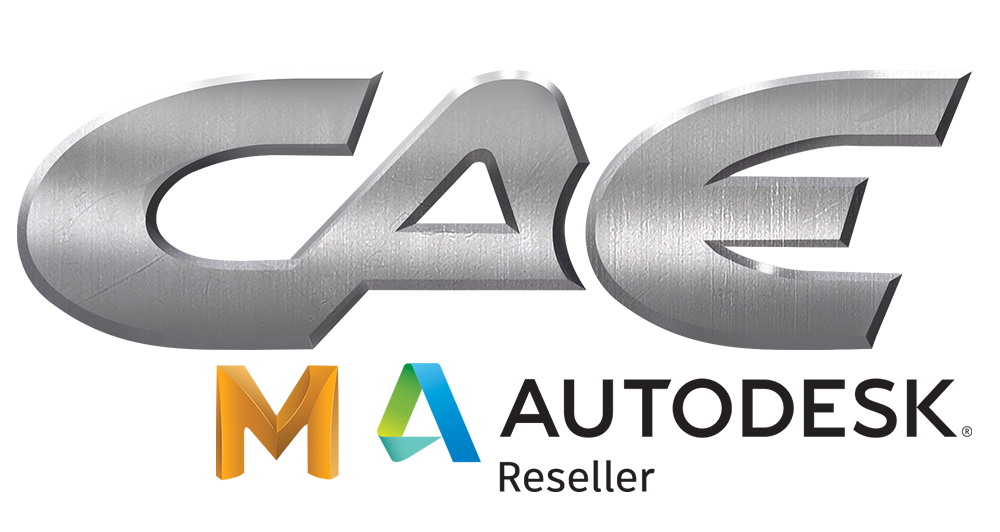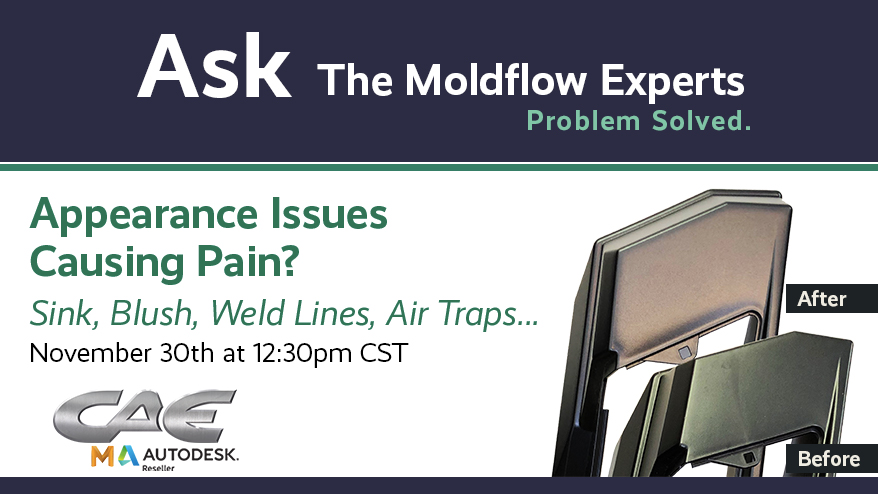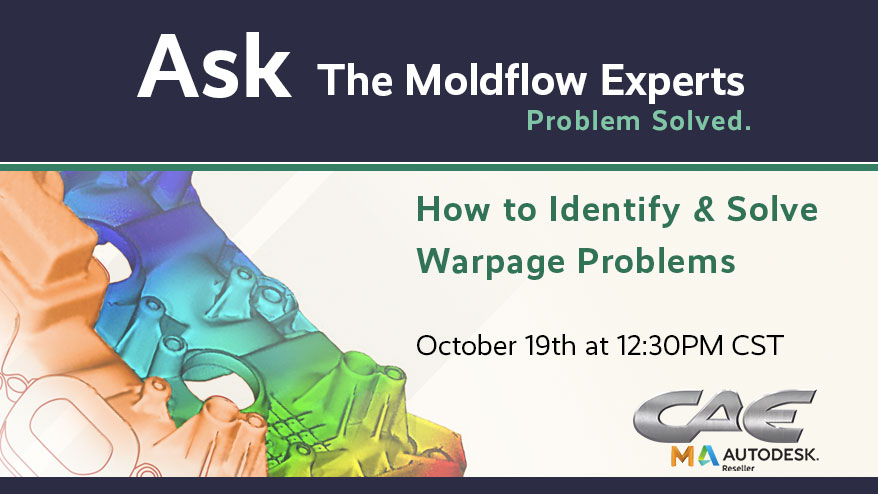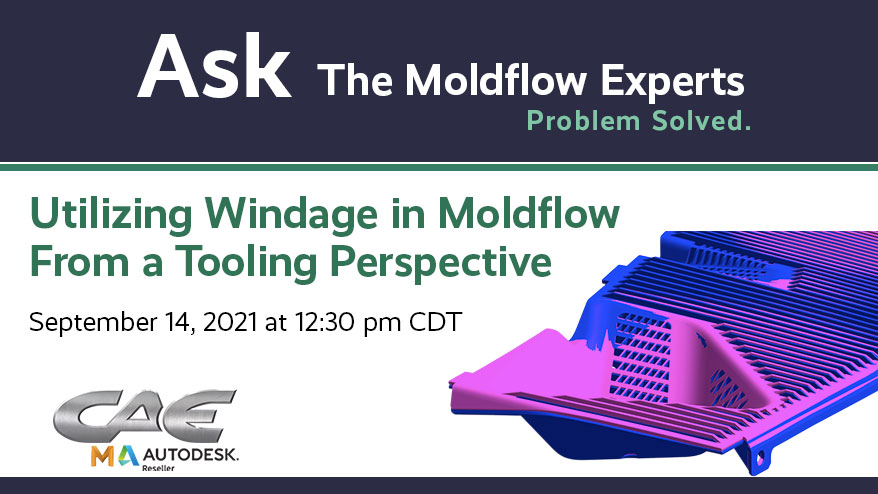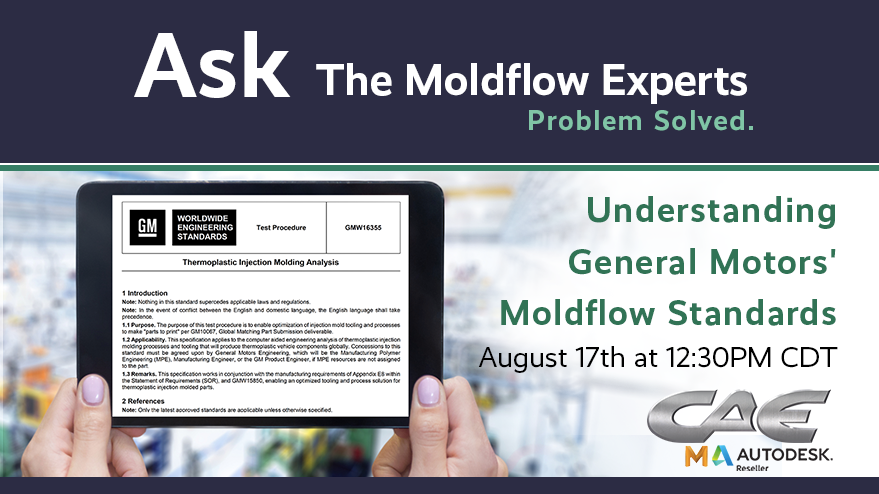
Thank you for stopping by
from Plastics News Daily
Tight Tolerances Concerns?
Call or Contact us Today!
AND scroll down to see how we solved a
tight tolerance warpage problem with windage.

ATME - Take Away

Step 1 - Correlation Existing Warpage
- Old material deck predicted right trend, wrong magnitude
- New material deck predicted trend and magnitude correctly
- Determined cause of warpage to be fiber orientation
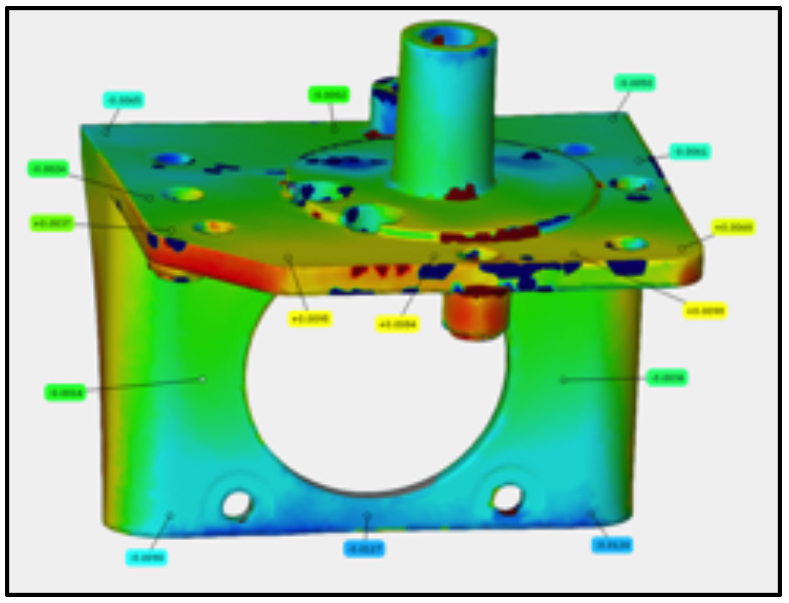
Old Material Deck
Max deviation = 0.014”
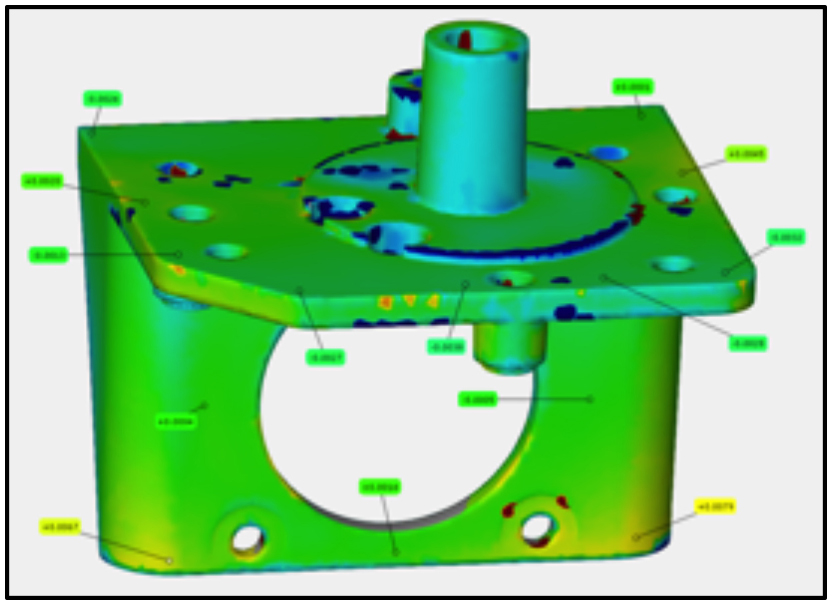
New Material Deck
Max deviation = 0.008”
Step 2 – Minimize Warpage
- Change Gate Location for more favorable fiber alignment
- Warpage reduced slightly, but not within tolerance
- Sink marks eliminated
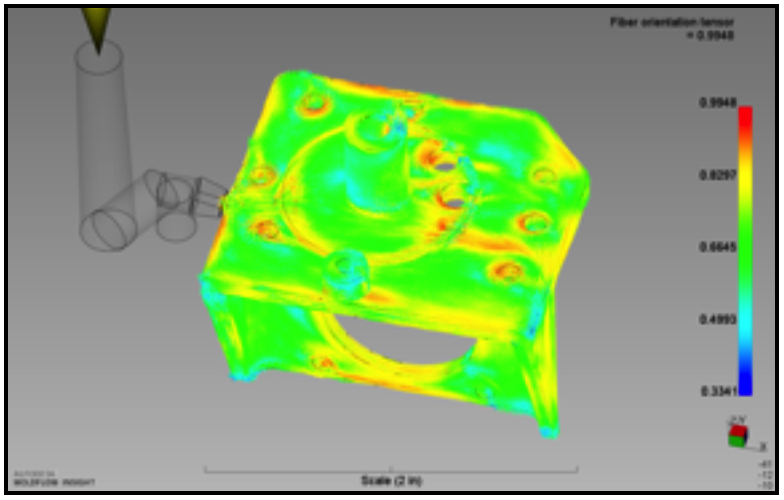
Max. Deflections
Downward - 0.0070”
Inward – 0.0099”
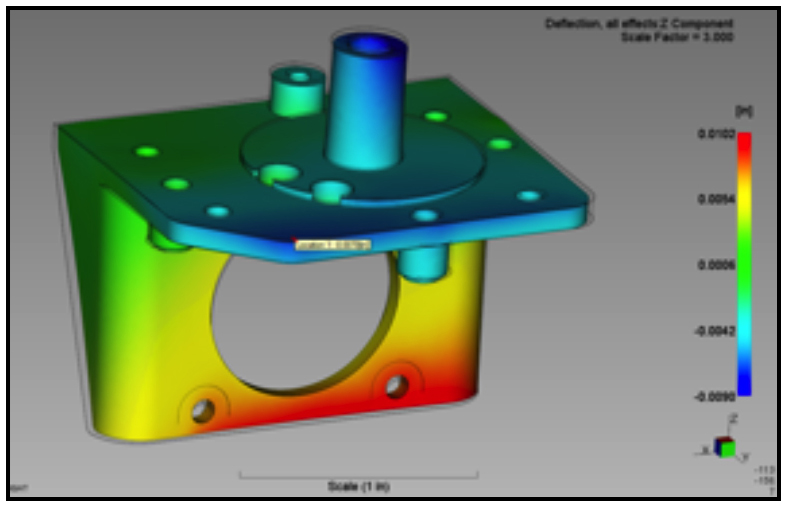
Fiber Orientation More Uniform Across Part
Step 3 – Use Windage to Fix Warpage
- Determine Windage Factor
- Decide on Shrinkage Number
- Morph the Part (avoid die lock)
- Confirm in Moldflow
- One week to complete analysis, material testing, and delivery of morphed windage file.
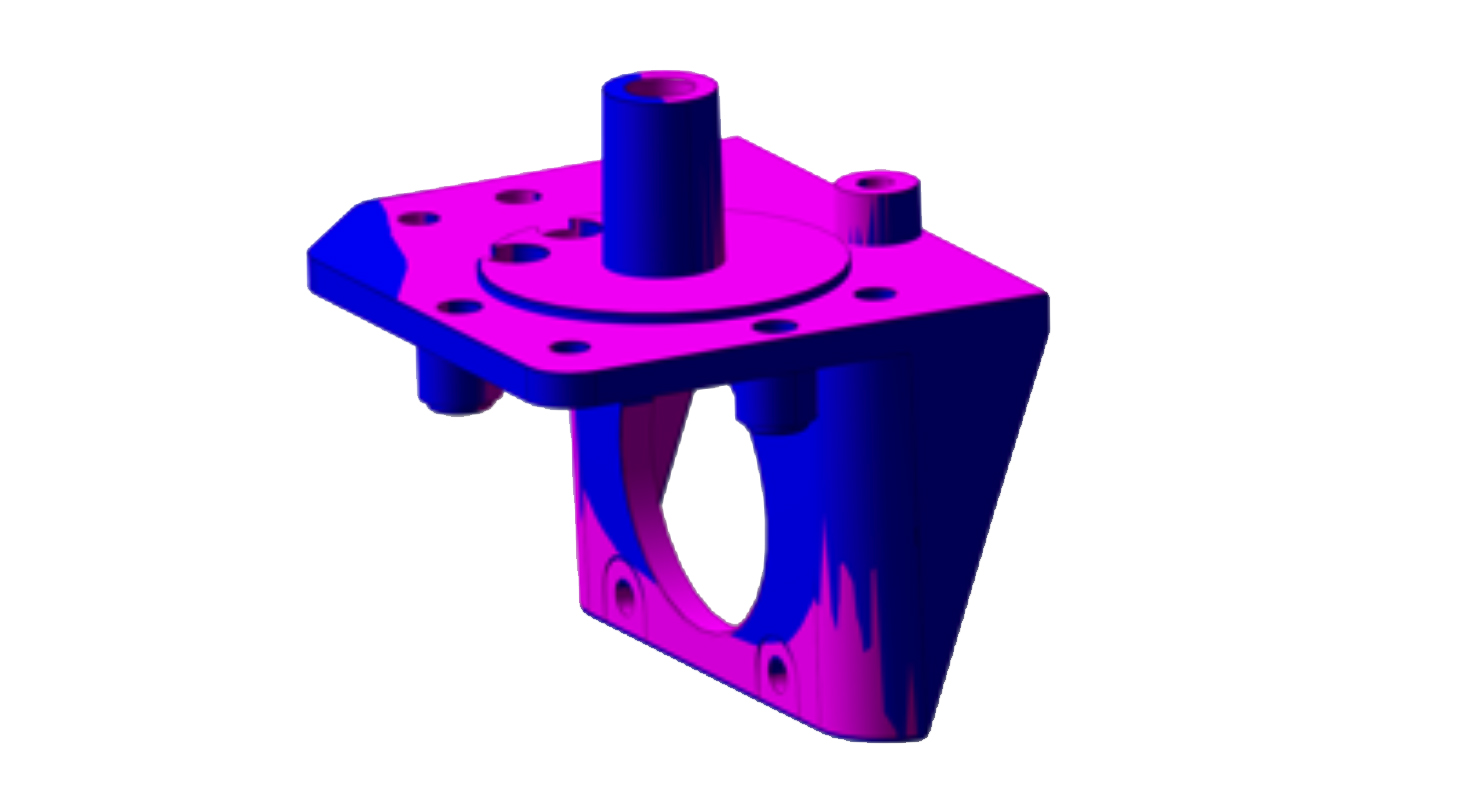
Purple = Nominal
Blue = Windage
Step 4 - Final Molded Samples - Dimensions
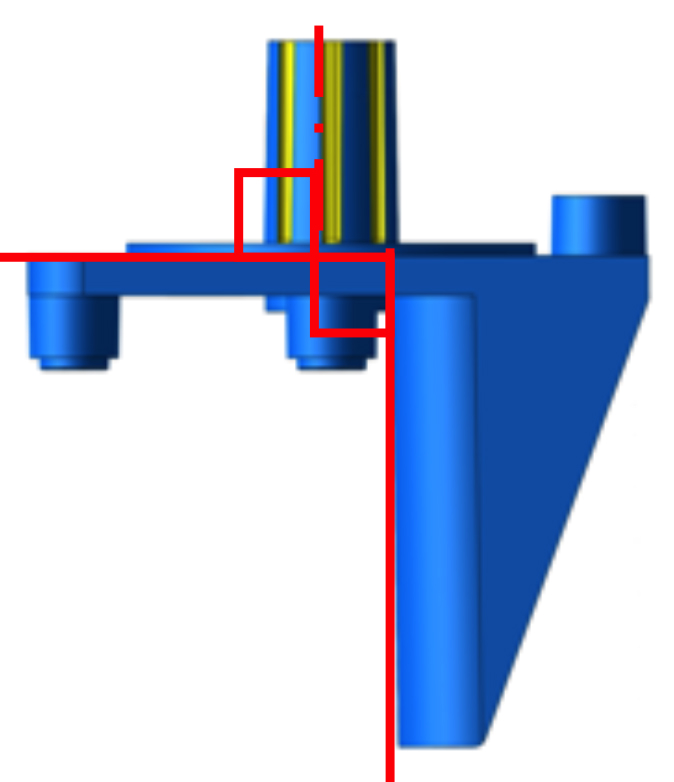
- Perpendicularity of L-shape
- Actual = (0.005, 0.004, 0.005)
- Well within 0.010” tolerance
- Perpendicularity of boss (0.0025”)
- Actual = (0.0011, 0.0013, 0.0012)
- Well within 0.0025” tolerance

First
Last
Email*
Phone*Comments*CAPTCHA
jQuery(document).ready(function($){gformInitSpinner( 2, ‘https://caeservices.com/wp-content/plugins/gravityforms/images/spinner.gif’ );jQuery(‘#gform_ajax_frame_2’).on(‘load’,function(){var contents = jQuery(this).contents().find(‘*’).html();var is_postback = contents.indexOf(‘GF_AJAX_POSTBACK’) >= 0;if(!is_postback){return;}var form_content = jQuery(this).contents().find(‘#gform_wrapper_2’);var is_confirmation = jQuery(this).contents().find(‘#gform_confirmation_wrapper_2’).length > 0;var is_redirect = contents.indexOf(‘gformRedirect(){‘) >= 0;var is_form = form_content.length > 0 && ! is_redirect && ! is_confirmation;var mt = parseInt(jQuery(‘html’).css(‘margin-top’), 10) + parseInt(jQuery(‘body’).css(‘margin-top’), 10) + 100;if(is_form){jQuery(‘#gform_wrapper_2’).html(form_content.html());if(form_content.hasClass(‘gform_validation_error’)){jQuery(‘#gform_wrapper_2’).addClass(‘gform_validation_error’);} else {jQuery(‘#gform_wrapper_2’).removeClass(‘gform_validation_error’);}setTimeout( function() { /* delay the scroll by 50 milliseconds to fix a bug in chrome */ jQuery(document).scrollTop(jQuery(‘#gform_wrapper_2’).offset().top – mt); }, 50 );if(window[‘gformInitDatepicker’]) {gformInitDatepicker();}if(window[‘gformInitPriceFields’]) {gformInitPriceFields();}var current_page = jQuery(‘#gform_source_page_number_2’).val();gformInitSpinner( 2, ‘https://caeservices.com/wp-content/plugins/gravityforms/images/spinner.gif’ );jQuery(document).trigger(‘gform_page_loaded’, [2, current_page]);window[‘gf_submitting_2’] = false;}else if(!is_redirect){var confirmation_content = jQuery(this).contents().find(‘.GF_AJAX_POSTBACK’).html();if(!confirmation_content){confirmation_content = contents;}setTimeout(function(){jQuery(‘#gform_wrapper_2’).replaceWith(confirmation_content);jQuery(document).scrollTop(jQuery(‘#gf_2’).offset().top – mt);jQuery(document).trigger(‘gform_confirmation_loaded’, [2]);window[‘gf_submitting_2’] = false;}, 50);}else{jQuery(‘#gform_2’).append(contents);if(window[‘gformRedirect’]) {gformRedirect();}}jQuery(document).trigger(‘gform_post_render’, [2, current_page]);} );} ); jQuery(document).bind(‘gform_post_render’, function(event, formId, currentPage){if(formId == 2) {if(typeof Placeholders != ‘undefined’){
Placeholders.enable();
}jQuery(‘#input_2_4’).mask(‘(999) 999-9999’).bind(‘keypress’, function(e){if(e.which == 13){jQuery(this).blur();} } );} } );jQuery(document).bind(‘gform_post_conditional_logic’, function(event, formId, fields, isInit){} ); jQuery(document).ready(function(){jQuery(document).trigger(‘gform_post_render’, [2, 1]) } );
Thank you for stopping by from Plastics News Daily
Tight Tolerances Concerns?Call or Contact us Today!
AND scroll down to see how we solved a tight tolerance warpage problem with windage.
ATME – Take Away
#id-4011 .carousel-slider-nav-icon {
fill: #f1f1f1
}
#id-4011 .carousel-slider-nav-icon:hover {
fill: #00d1b2
}
#id-4011 .owl-prev,
#id-4011 .owl-next,
#id-4011 .carousel-slider-nav-icon {
height: 48px;
width: 48px
}
#id-4011.arrows-outside .owl-prev {
left: -48px
}
#id-4011.arrows-outside .owl-next {
right: -48px
}
#id-4011 .owl-dots .owl-dot span {
background-color: #f1f1f1;
width: 10px;
height: 10px;
}
#id-4011 .owl-dots .owl-dot.active span,
#id-4011 .owl-dots .owl-dot:hover span {
background-color: #00d1b2
}
Step 1 – Correlation Existing Warpage
Old material deck predicted right trend, wrong magnitude
New material deck predicted trend and magnitude correctly
Determined cause of warpage to be fiber orientation
Old Material Deck
Max deviation = 0.014”
New Material Deck
Max deviation = 0.008”
Step 2 – Minimize Warpage
Change Gate Location for more favorable fiber alignment
Warpage reduced slightly, but not within tolerance
Sink marks eliminated
Max. Deflections
Downward – 0.0070”
Inward – 0.0099”
Fiber Orientation More Uniform Across Part
Step 3 – Use Windage to Fix Warpage
Determine Windage Factor
Decide on Shrinkage Number
Morph the Part (avoid die lock)
Confirm in Moldflow
One week to complete analysis, material testing, and delivery of morphed windage file.
Purple = NominalBlue = Windage
Step 4 – Final Molded Samples – Dimensions
Perpendicularity of L-shape
Actual = (0.005, 0.004, 0.005)
Well within 0.010” tolerance
Perpendicularity of boss (0.0025”)
Actual = (0.0011, 0.0013, 0.0012)
Well within 0.0025” tolerance


